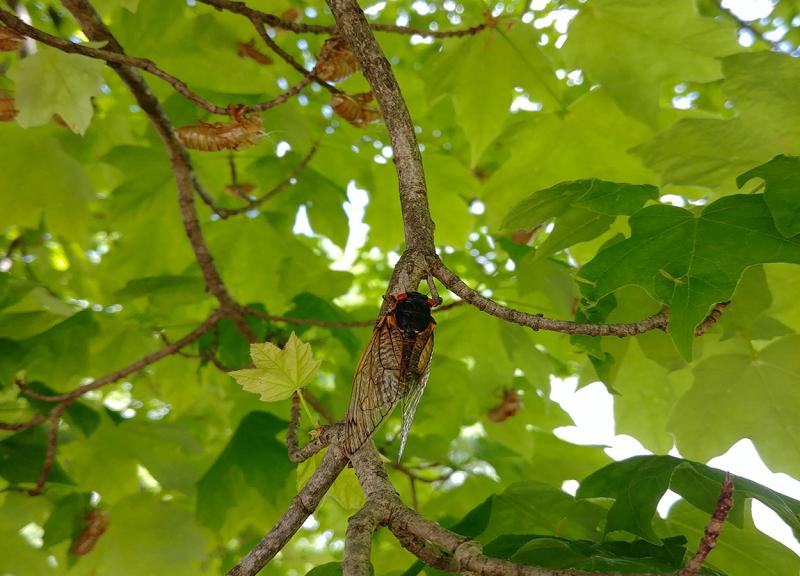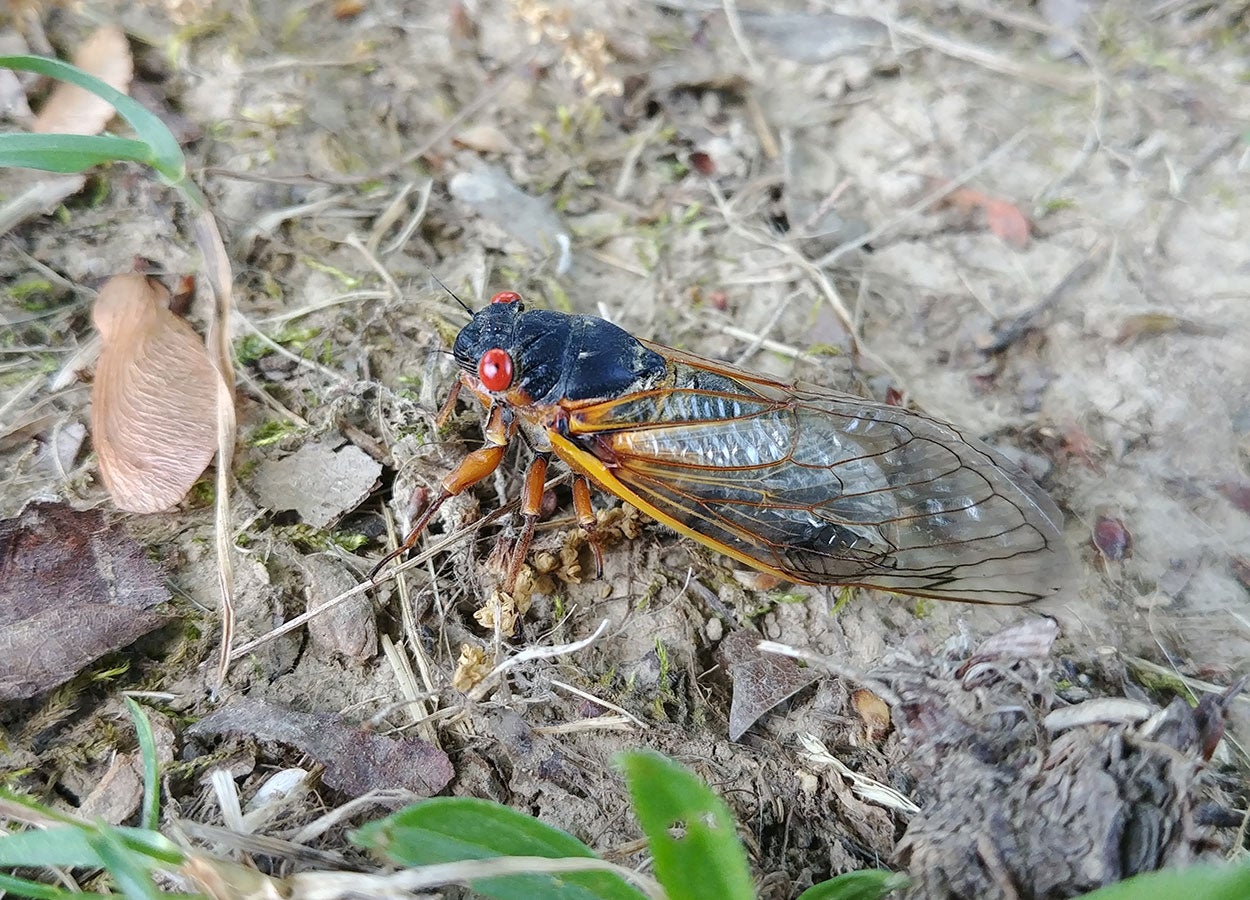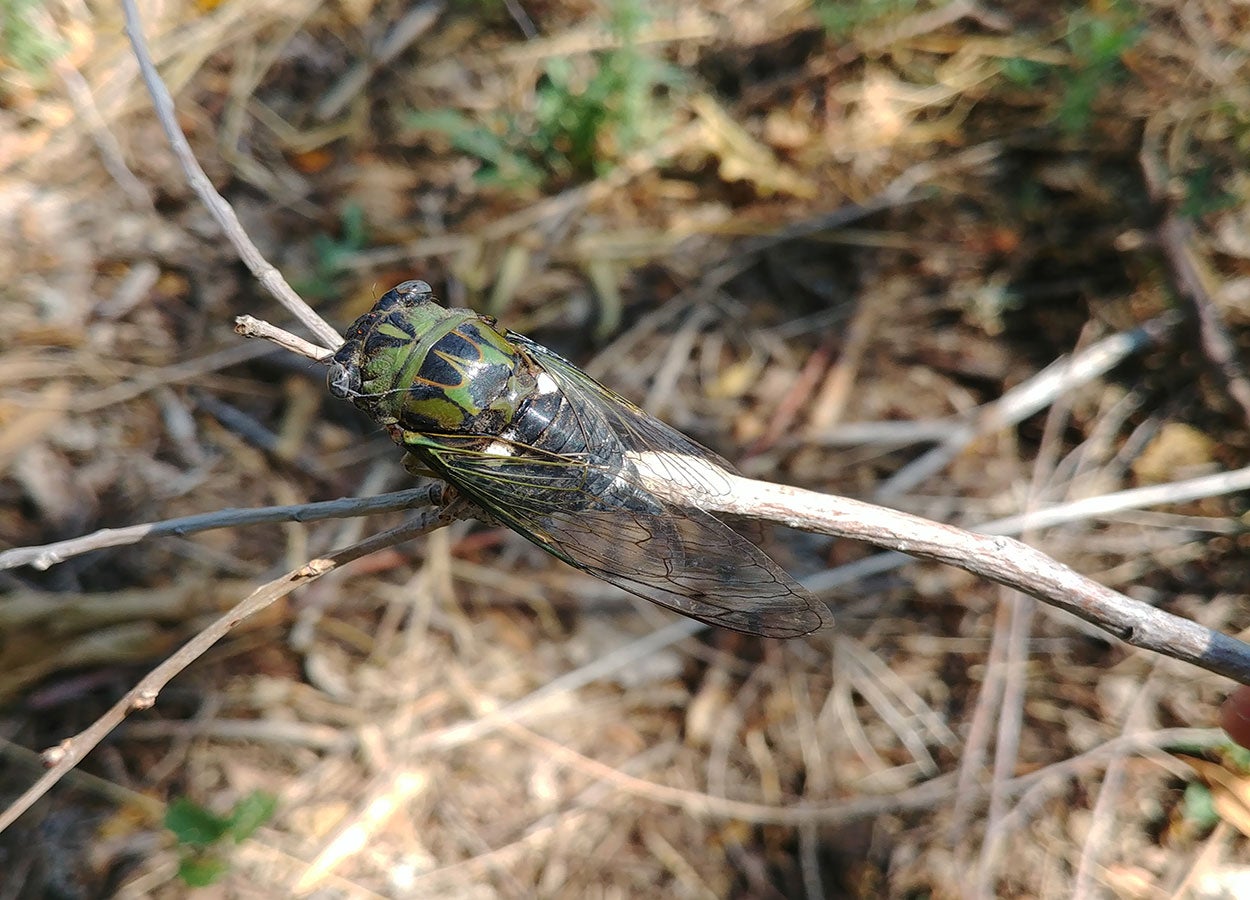
Originally Submitted: April 30, 2024
2024 Periodical Cicada Broods
Cicadas are making headlines this spring—specifically the periodical cicadas in Brood XIII and Brood XIX. Periodical cicadas spend 13 or 17 years underground as nymphs, before emerging in massive numbers for a short period of time (Figure 1). The broods making headlines this year are both in the Midwest and are geographically close together. Brood XIII is one of the 17-year species and occurs in eastern Iowa, northern Illinois, and southern Wisconsin. Brood XIX is a 13-year species and is more geographically dispersed, being present in Missouri, southern Illinois, Arkansas, and seven other southeastern states.
South Dakota is not home to any broods of the periodical cicada species. That means you’ll have to take a road trip if you want to see them in person. The closest counties containing Brood XIII are in northeast Iowa. One way to track the cicada emergence is to use the iNaturalist website. Searching “Magicicada” as the species and using the date range filter to include only 2024, allows you to keep an eye on where these insects are showing up. Current reports, as of the end of April, show nymphs that are at the soil surface just south of Cedar Rapids, Iowa.
Periodical vs. Annual Cicadas
Periodical

Periodical cicadas need certain soil and air temperatures to emerge, but they should be out in force by mid-May over much of their range. The adults live for about a month, assuming they aren’t eaten by a bird or another predator. Periodical cicadas are easily identified by their red eyes and dark-brown to black bodies (Figure 2).
Annual

The cicada species present in South Dakota are annual species that emerge in late summer (also known as dog-day cicada). They are larger than the periodical cicadas and their bodies are generally brown or green with dark eyes (Figure 3). For more information on our South Dakota cicadas, see our article, What’s Buzzing in the Trees?.
Resources
- iNaturalist, iNaturalist Network.
- Brood XIII – the Northern Illinois Brood, University of Connecticut.
- Brood XIX – the Great Southern Brood, University of Connecticut.


